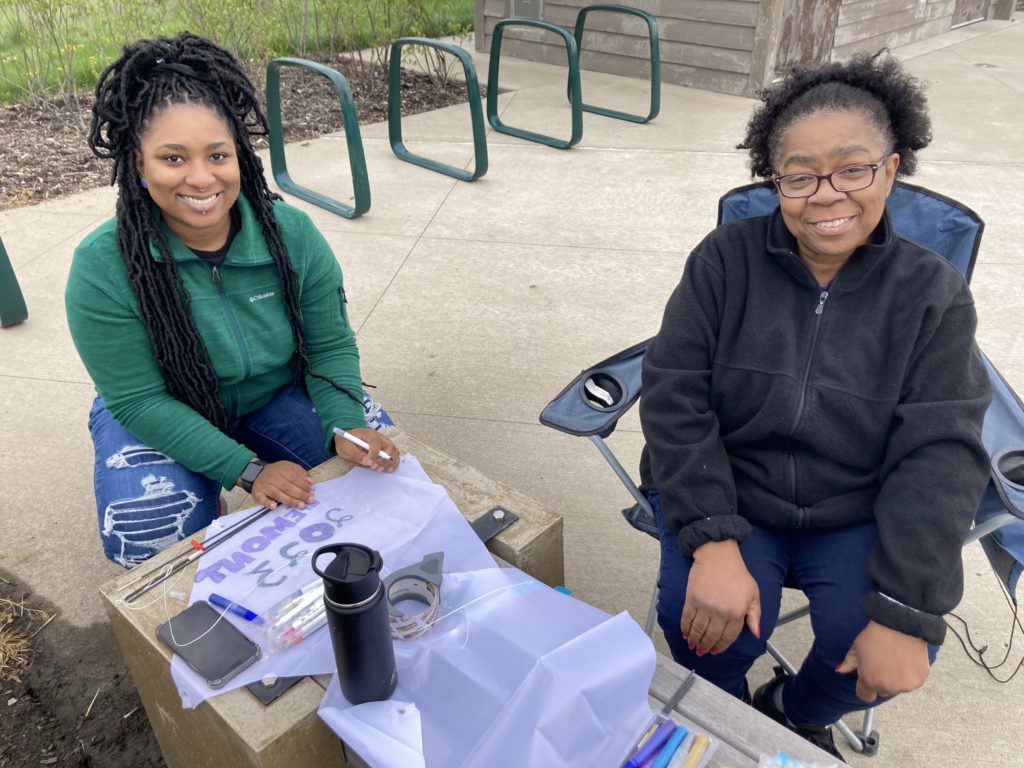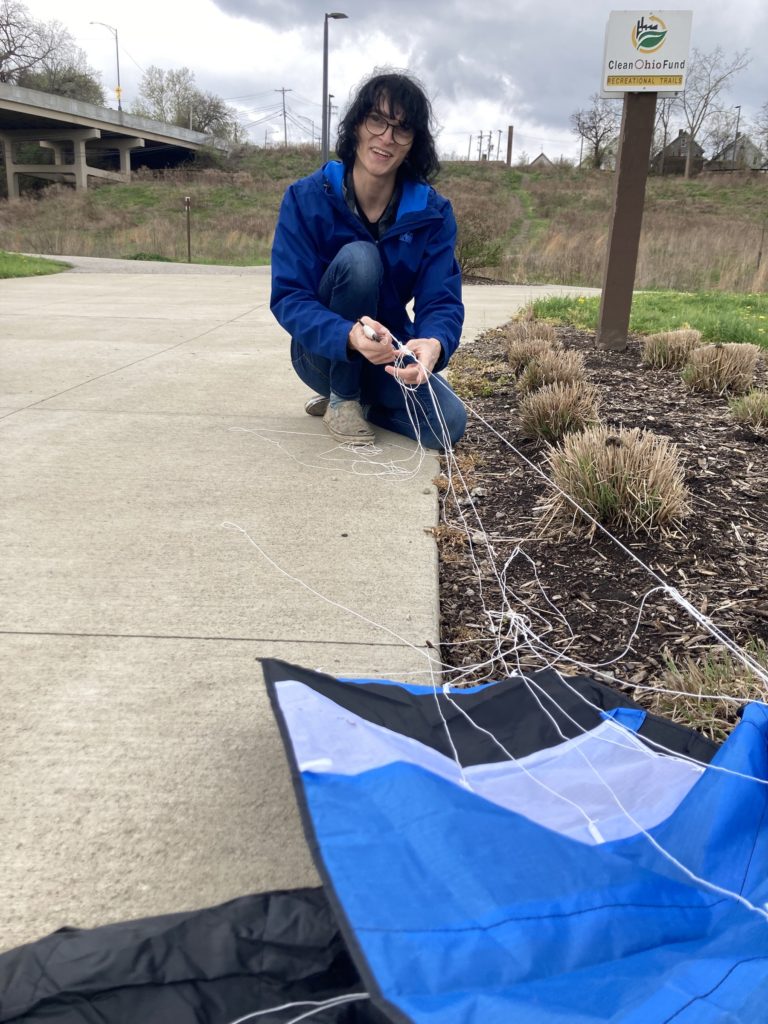
Kite Day
by Bruce Checefsky
Erich Hooper has been farming since 1993. Hooper Farm in Tremont (2835 West 11th Street), the original Cleveland urban farm, is cultivated on a 1-acre parcel at 2702-2880 W 11th Street, just a few blocks from A Christmas Story House and Lincoln Park. Erich works with the youth, elderly, ex-convicts, and others on the farm, giving them real-life skills and opportunities they can use to support themselves. Hooper grows lettuce, carrots, tomatoes, sage, onions, potatoes, and other crops, with enough produce for restaurants, many of them in the Tremont neighborhood. Hooper Farm Kite Day at Clark Field took place last month.
Bruce: What is Hooper Farm Kite Day?
Erich: I was in New Hampshire near the ocean when a semi pulled up to the beach, opened up the side of the truck, and there were hundreds of kites of various sizes and types. People ran to the it like it was a candy store. They purchased the kites or rented them, then went to the beach and flew them. Imagine seeing three hundred people along the shoreline flying kites. It was beautiful, and I thought, wow, we do not have that in Cleveland. So the idea is to start a kite festival neighborhood by neighborhood and unite them all at the lakefront for a Cleveland Kite Day. It is the incubation of that idea to see how feasible it is to work out. We have involved The Pivot Center for Art, Dance, and Expression as our space to create and decorate kites. We had over forty-five kids show up to make kites. Some kites went to schools like Tremont Montessori, Luis Muñoz Marín, and Lincoln West School, while others went to boys and girls clubs. They get to decorate the kites and use their design, and we teach them a little about aerodynamics and aviation. The result is to spread the kite festival throughout Cleveland to make the children aware of what is happening above their heads in the sky.
Bruce: Why do kids like kites?
Erich: Kids like the freedom of control over something. They cannot yet drive a car but ride a bike. The kite is the same kind of freedom as biking. Once they find kite competitions and kite battles, and other cultures using kites, it becomes a whole new marketing opportunity for a young entrepreneur.
Bruce: What is kite day?
Erich: Cleveland has no official Kite Day. There is a National Kite Flying Day in February, but we missed that date, so we picked another one [Earth Day]. Children get to learn about kites from other cultures. The most notorious balloon kite was the recent one sent over by the Chinese.
Bruce: How does this project fit into your concept for an urban farm?
Erich: As I have said for years, there are a hundred jobs on any farm, not just digging into the soil. There are mathematics and science, electricity, plumbing, and weather studies. Each child has the ability to use their imagination, so this is not just another offshoot of what kids would normally do.
Bruce: Are you a kite maker?
Erich: We started as kids using black garbage bags and tree limbs, and string from the clothesline. We tore shirts apart to make the kite tail.
Bruce: How important to flying is the kite tail?
Erich: Kite tails are of various sizes and weights and offer different aerodynamic dimensions to the kite flying. If you look at a the wings and feathers of a bird or an airplane wings, the way they operate, the kite tail is the same kind of magic. The beautiful thing about a kite tail is you can always dazzle and make them as long as you want. The kites we brought for the festival are about five feet long, very beautiful and a pain in the rear to stuff back into the bag.
Bruce: Where do you get the materials from?
Erich: Tremont West Corporation provided the materials. Dharma Valentin, Community & Equity Organizer/Program Manager, got them online. We looked at several kinds and types of kites, various styles, and large ones that resemble airplanes. David Witzke, the Bird Man from Tremont, put his bird on one of the kites. The kites are available all summer long. We get beautiful wind in and around Clark Field. I have been playing there since I was a kid in 1966.
Bruce: How is the farm?
Erich: Things are well on the farm. We have nine shiitake mushroom logs that we are looking to sell to restaurants so you can order them, and the chef will cut the mushrooms off the log and cook them for you in a kind of performance art event that is agricultural. It is one thing to take a mushroom from a bin and prepare it, while another to cut it from the log while it is still alive and use it in front of a customer. We have a few more projects this summer. I want to have a neighborhood dog show.
Bruce: If someone were interested in the mushroom logs, for example, how do they reach you?
Erich: Call 216-854-3905 or find us on Facebook. Google us. I usually respond within a day or two, especially about the product. We have cherry wood for sale, dura flame logs, mulberry, and maple, although some maple has been going to the Cleveland Zoo to feed the elephants.
Bruce: I was not aware elephants ate maple.
Erich: They love it. I used to work at the zoo when I was a kid. Years ago, I would take the elephant and animal waste and use it on the farm. Now they call it zoo-do. In the summers, I worked at the swimming pool in the zoo, and at night, they would bring the elephants into the pool and let them swim. Then we would drain it, sweep it clean, and fill it back up for the people to swim in it during the day.

Earth Day, April 22.

Kite Day

Kite Day



